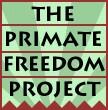I knew nothing about polo and cared even less when I walked onto the grounds of the Selangor Polo Club, as it was then called. (The club's patron, HRH Sultan Sharaffudin Idris Shah of Selangor, has since given it a royal warrant, so it is now The Royal Selangor Polo Club.) Situated since the 1960s on prime land just off Jalan Ampang Hilir, with the Twin Towers soaring above the treeline, the polo club is a quiet oasis of greenery in the heart of Kuala Lumpur. Rows of cinderblock stables, clouds of dust, the nickering and neighing of horses, the clop of hooves, the smell of hay, manure and leather, the jingle of tack, the singing of grooms…I was smitten. Not with polo, but with the place.
I wasn’t there to learn to play or even to take riding lessons, at first, although that would come later. The Riding for the Disabled Association of Malaysia, or RDA, has its main branch at the Polo Club. Four mornings a week, a flock of volunteers gather to teach disabled children to ride. This was something I had wanted to do for years, and I was excited about the chance to get started at last. It turned out to be more difficult and more meaningful than I ever anticipated, but this is not a story about the RDA. It’s the tale of an abandoned polo pony.
I was leaving the club one day after an RDA session when an American woman I knew slightly called out to me. She was on the verge of relocating back to the States. She took me to see four horses housed in a block of stalls that had previously been empty. It was a block that stood just to one side of the main gate; in other words, one that everyone had to pass by on their way in and out.
“These horses have been hidden in a block of stables in the back,” she told me. “They are barely alive. I’ve been trying to help them, but now I’m leaving. I managed to get them moved out here, so at least they will be seen.”
I stared at the horses with their protruding skeletons and dead eyes. “Who owns them?”
“The Armed Forces,” she said sadly. “They don’t want to ride them, so they just abandoned them. I know you love animals. Can you keep an eye on them? Can you help them?”
I had no idea what I could do, but I agreed to try my best. After she was gone, I took a closer look at the horses. Two were brown, a mature mare and her stallion son. One was white, and not in quite as bad shape as the others. The most serious case was a palomino mare whose threadbare body hung like a rag from the ridge of her spine. Her eyes were inflamed, her mane almost gone, her legs knobbly and crooked. I took one look at her and fell madly in love.
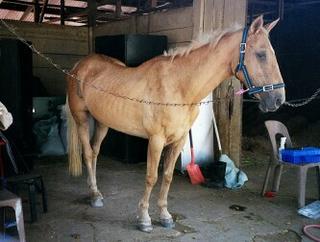
Scout, one of the abandoned polo ponies
A friend of mine, a Swiss woman who took riding lessons at the club, was equally concerned when she saw the horses. Like many of us, she has more compassion than common sense. We took up the task of feeding and watering these unwanted animals. Before long, the two of them that were the least damaged – the white gelding and the brown mare – were transferred to the riding school, thanks to the efforts of the head of the RDA and the fact that the school was chronically short of rideable horses.
No such succour was in sight for the palomino and the stallion. From what we could dig up, the stallion had never been trained or ridden. He had been left to waste away in a forgotten stall at the back of the club, where he had worn his teeth down to nubs, chewing on the metal pole that blocked the door of his stall, a legacy of the mind-numbing boredom that had been his life. My friend adopted him and named him d'Artagnan -- a good, swashbuckling name to inspire courage in a young horse.
The palomino, on the other hand, had once had a stellar career; she was one of the best polo ponies the club had ever seen, I was told. Fast, proud and a fierce fighter who never gave up on the field. So how had she come to be starving and uncared for in a hidden stall? She got too old to play polo anymore, and, instead of a pleasant retirement to the role of riding horse, she was simply abandoned. Grooms working in the vicinity had kept her and the others alive by skimming off small portions of food from the horses they were paid to watch over.
I was nearly blind with rage, or would’ve been, if there had been time to indulge my feelings. Instead, I wangled permission, again thanks to the help of the head of the RDA, to take sole responsibility for the palomino, whom I named Scout. She was about 20 years old at the time. The man who had bought her in New Zealand, brought her back to Malaysia and ridden her for over a decade – a retired member of the armed forces – arranged for me to take over her care, and also agreed to donate a small amount of money every month towards her upkeep. He said she was the best polo pony he had ever ridden; I wondered, then, where he had been all these years while she was suffering in solitude, but realized it would do her more good to keep my shut, say thank you and get on with her rehabilitation.
Don’t run away with the idea that I knew what I was doing; I knew exactly nothing about how to take care of a horse, much less a seriously malnourished, underfed one. The first step was to bring in the club vet to examine her. In fact, I took advice from every vet I could buttonhole. More than one of them told me she was a lost cause and should be put down. I knew otherwise; don’t ask me how I knew, because I had no experience to draw on, but I knew. Besides, I once worked for an extraordinarily gifted vet in Singapore, who used to say, “No animal ever wants to die. They don’t commit suicide.”
She was tested, dewormed, vaccinated and given an ointment for her eye condition. I bought her a fly mask to keep the flies out of her eyes, a kit full of grooming equipment, a halter and lead rope so I could walk her and had two boxes, one large, one small, made to store her food and equipment in. I went twice a day, morning and evening, to feed her, groom her and exercise her. Ideally, she should’ve been fed three times a day, but that was more than I could handle.
I don’t remember how I put the halter on her the first time, or how I ever had the confidence to lead her out of 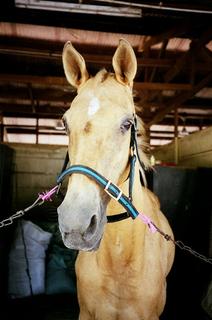 that stall. Somehow, I did it, with her cooperation. I must’ve gained her trust first by feeding her, because she was the proudest, most spirited damn horse in the club. Whenever anybody she didn't know approached her, her head went sky-high and she dared him to come closer. This was not a horse to be forced!
that stall. Somehow, I did it, with her cooperation. I must’ve gained her trust first by feeding her, because she was the proudest, most spirited damn horse in the club. Whenever anybody she didn't know approached her, her head went sky-high and she dared him to come closer. This was not a horse to be forced!
Maybe that’s how we came to get along. I never forced her, not one step of the way. Instead, I crooned to her. Cowboy songs, like Tumbling Tumbleweeds and Back in the Saddle Again. I don’t know if she liked my singing, but it calmed me down and made it possible for me to work with her. Before long, we were a familiar sight around the grounds, strolling – actually, she stepped out at too fast a clip to call it strolling! – and grazing. I practised little bonding techniques I found in books and magazines, such as pressuring her ever so gently with a finger to her side until she took a step away. The idea being that she should respect my space, lest my toes get flattened someday if she realized exactly how neglible I actually was.
I took her into the ring sometimes and turned her loose to play. She would canter off with a happy little fart and kick up her heels. Rolling in the dirt was obviously a treat. I messed around in the ring with her, trying the Horse Whisperer-technique of pushing her away with a direct stare and then inviting her back by looking away. In what I remember as only a few days, but which might have been longer, she would follow at my heels when I walked away. She would come when I called. We were a team. Sometimes, when there was no-one around, I would even walk her around the grounds and polo pitch without her lead, just to prove to myself that I could.
The absolutely hardest part of the whole adoption was figuring out how to feed her. Horses are somewhat tricky entities that way; feed them the wrong thing or the wrong amount and they can peg out on you in the blink of an eye. I consulted grooms, vets, horsewomen and books. There was a formula based on a percentage of body weight. I had someone experienced eyeball her and estimate her weight for me. Then I took the best advice I could get about the ratio of roughage to concentrated food she should have. I still have some of my notes from back then, and it looks like rocket science to me now. I can’t do math, except, apparently, for when I really have to.
Not content with giving her only sweetfeed and hay, I arranged for bags of fresh-cut grass to be delivered to us. I brought her carrots and apples, only to discover, much to my surprise, that horses here aren’t used to eating apples. She turned up her proud nose at them. Carrots, though, she could eat by the bagful. I bought vitamin supplements, calcium, isotonic powder. I measured and mixed and fretted, in about equal parts.
After a month or so, one of the experienced horsewomen at the Club stopped to take a casual look at her and exclaimed at how thin she still was; what was I feeding her? I explained my ever-so-careful system and how I was gradually increasing the amount of her food so as not to shock her body.
“Good heavens,” the woman said, “go ahead and feed her properly! You’ve done it slowly enough already. She’s got to have more to eat.”
I bet that was one of the happiest days of Scout’s life!
The gruelling schedule was breaking me down, though, so I hired one of the grooms to work for me part-time. He would take over her morning and evening feeds, while I would come in to walk her, wash her and groom her, and then give her a mid-day meal.
Those were amazing days. She gained weight, although she would always be svelte. Her mane grew in a bit, her eyes brightened. Medicated cream cleared up the fungus on her skin and a greasy ointment healed her cracked, dry hooves. I had shoes put on her, after much debate, even though she wasn’t being ridden, because I wanted to exercise her on a longe line. Not that I knew how to, but that hadn’t stopped me yet.
I arranged to take some longeing lessons from the head of the riding school, in lieu of some of the riding lessons I had paid for. I have to admit, Scout did not take well to longeing. My groom and his brother tried to train her to it for me, but progress was slow and intermittent, set-backs frequent. When I took the line, she usually just walked over to stand next to me instead of moving around me in a circle as she was supposed to.
We flirted with having someone ride her. My groom worked patiently to get her used to wearing a bridle and saddle again. He was one of the gentlest people I had ever met, and Scout trusted him as much as she trusted me. However, most of the people I knew were afraid to try to ride her. The head of the riding school made dire predictions about how dangerous she might be. I knew Scout would never deliberately hurt someone, but she was high-strung and spirited, and I didn’t want to pressure anyone into it, for fear they might get hurt.
At last, a Malay horse-trainer I knew only slightly agreed to take on the job. He was bit of a flirt, and I think he had hopes of impressing, not me, but one of my pretty friends. Fine by me, as long as she didn’t mind having to bat her eyes at him occasionally. All I cared about was getting Scout the best possible care.
Somewhat to my surprise, he turned out to have a way with horses. I had been half-afraid he might try to bully her, but he was calm and patient and she responded like the queen she was to his courtliness. I was as proud as a new mom the day I saw him riding her. On days when he couldn’t ride her, he would still lead her behind another pony as he trotted around the polo pitch, so Scout could get some exercise and some companionship. (I’m not sure she really needed the latter; whenever I released in one of the paddocks, she stayed away from the other horses.)
A day came when my husband said we would be transferring out of the country. I panicked. My first wild thought was to send her across the world to live on my parents’ farm in America. My father and mother scotched that idea in no uncertain terms. I tried to persuade the riding school to take her on, but the head was still convinced that Scout was potentially dangerous – besides, she was too old to make it worth the investment of retraining her. I considered trying to find a retirement farm here in Malaysia to send her to, but I didn’t think I could afford it.
Finally, the retired army officer who had arranged for me to take care of her stepped forward. He said he wanted a riding horse for himself and for his children. He had no qualms about getting on her; he had known and ridden her for years. I hesitated; his manner with her had always been brusque and she showed no particular liking for him. I was also concerned that he might try to play polo on her again, something she should definitely not be exposed to. He promised he would not do that, and I felt I had very little choice in the matter.
As it turned out, we didn’t transfer that time after all, but I fell ill for over a year and by the time I started to regain my strength, our circumstances had changed so much that I decided to let the matter rest where it was. I did not try to get involved in Scout’s life again, knowing that someday I would leave Malaysia. I have visited her a few times, though, and checked in with the army officer to be sure she was okay. Scout does not welcome me back, by the way. She is, as I have said, a proud animal, and once I had left her, she was done with me. I took her carrots and she still gave me a cold, scornful eye. What a horse!
The hours I spent with her are some of the happiest I have ever had. They glow with the golden radiance that shone from her when she stood beside me, freshly washed and groomed, glittering under the bright sun. I wish I could go back to that time, and walk with her again. I hope she lives in peace and comfort for the rest of her days.
If abuses like the ones I saw are ever to stop, there would have to be a serious, in-depth investigation into conditions and practices at the Club. New standards would need to be drawn up and enforced by an independent oversight committee not stacked with the cousins, sons-in-law and business partners of the polo club members it was supposed to monitor. Unfortunately, the odds of this happening are about as good as the odds of me becoming a champion polo player. Pity the poor polo ponies who pay the price for human arrogance and indifference.
Some tid-bits from my time at the Polo Club:
- Grooms sometimes sell unwanted horses to be eaten.
- Status is everything; you can ride a horse with a fractured hip, and, if you're well-enough connected, no-one will stop you.
- Inept players sometimes whack their own horses in the head with their polo mallet.
- Horses bring out the ugly, macho side of a lot of men. I have only rarely seen the same effect with women.
- Since Muslims don't believe in putting animals down, a horse can writhe in pain on the ground and die a slow death while its owners do nothing.
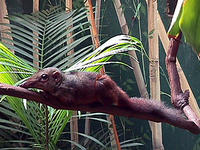 in a wire cage in a neighbour's yard. I know the people slightly, an elderly Chinese man and his younger wife, who keep a nice, if underfed, dog named Ah Fook. The Wongs and I are casually friendly, having met through our dogs.
in a wire cage in a neighbour's yard. I know the people slightly, an elderly Chinese man and his younger wife, who keep a nice, if underfed, dog named Ah Fook. The Wongs and I are casually friendly, having met through our dogs. 


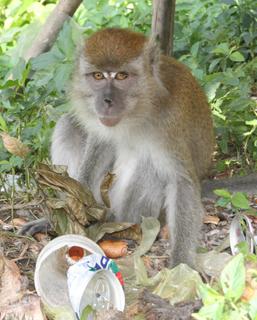

 Support the SPCA's campaign for
higher fines and longer jail terms
for animal abusers.
Support the SPCA's campaign for
higher fines and longer jail terms
for animal abusers.





